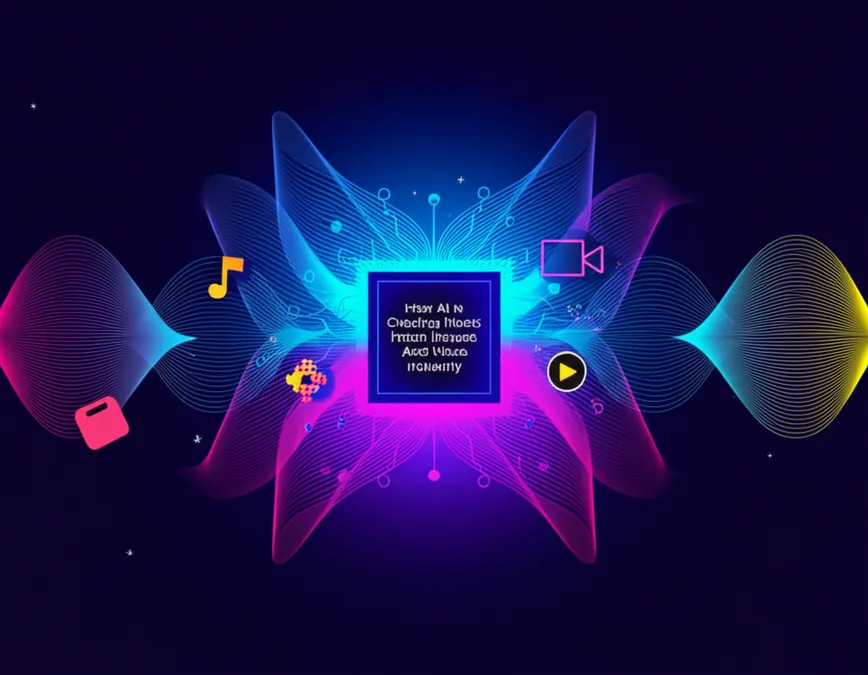Developer Offer
Try ImaginePro API with 50 Free Credits
Build and ship AI-powered visuals with Midjourney, Flux, and more — free credits refresh every month.
Can AI Detectors Really Spot AI Generated Content
With nearly half of all Australians now using artificial intelligence tools, it's more important than ever to understand when and where this technology is being used. The rise of AI has brought a wave of high-profile mistakes, from a consultancy firm's report with AI-generated errors to a lawyer using fake AI-generated citations in court. These incidents, coupled with universities' concerns over student use, have fueled the demand for tools that can identify AI-generated content.
This has led to the emergence of "AI detection" tools. But how do they really work, and can we trust them to be accurate?
The Mechanics of AI Detection
There isn't a single method for detecting AI; instead, different approaches are used depending on the type of content. Each comes with its own set of challenges.
For written content, detectors often search for signature patterns. They analyze sentence structure, writing style, and the predictability of word usage. For example, some have noted that words like "delves" and "showcasing" have become much more common since AI writers became popular. However, as AI models improve, the gap between AI and human writing patterns is shrinking, making these signature-based tools increasingly unreliable.
When it comes to images, some detectors analyze embedded metadata that AI tools might add to the file. Tools like the Content Credentials inspector can reveal an image's creation and editing history, provided it was made with compatible software. Another technique involves digital watermarking, where developers embed hidden patterns into their AI's output. These patterns are invisible to humans but can be identified by the developer's own tools. The major drawback is that these detection tools haven't been released to the public.
The Reality of AI Detector Accuracy
The effectiveness of AI detectors is far from guaranteed and depends on many factors, including which AI model created the content and whether it was later edited.
The data used to train these detectors also plays a crucial role. For instance, if a dataset for detecting AI images lacks sufficient diversity, such as not having enough full-body pictures or images from certain cultures, its ability to detect content is already compromised.
Watermarking offers a more reliable solution, but only in a closed ecosystem. For example, Google’s SynthID tool is designed to spot content made by Google's own AI models. However, it is not publicly available and cannot detect content generated by a competitor like ChatGPT. This lack of interoperability is a significant hurdle.
Furthermore, AI detectors can be easily fooled. A simple edit, like adding background noise to a cloned voice or reducing an image's quality, can be enough to trip up the detection algorithm.
Another major issue is the lack of explainability. Most detectors simply provide a probability score—for instance, "95% likely AI-generated"—without offering any reasoning. This black-box approach is problematic, especially when the stakes are high.
It's a constant arms race. As AI technology advances, detectors struggle to keep up. The winner of Meta's Deepfake Detection Challenge, for example, performed well on its training data but saw its success rate plummet when faced with new content. This means detectors can produce both false positives (flagging human work as AI) and false negatives (missing AI-generated content). The consequences of these errors can be severe, from a student being wrongly accused of cheating to someone falling for a sophisticated scam.
What You Can Do
Relying on a single automated tool is risky. A better strategy involves using a variety of methods to verify the authenticity of content.
For text, this means cross-referencing sources and double-checking facts. For images or videos, try to find other media from the same event or location to compare against. If something feels off, don't hesitate to ask for more information or clarification.
Ultimately, as detection tools struggle to provide certainty, building and maintaining trusted relationships with people and institutions remains one of our most important defenses against a flood of synthetic content.
Compare Plans & Pricing
Find the plan that matches your workload and unlock full access to ImaginePro.
| Plan | Price | Highlights |
|---|---|---|
| Standard | $8 / month |
|
| Premium | $20 / month |
|
Need custom terms? Talk to us to tailor credits, rate limits, or deployment options.
View All Pricing Details

